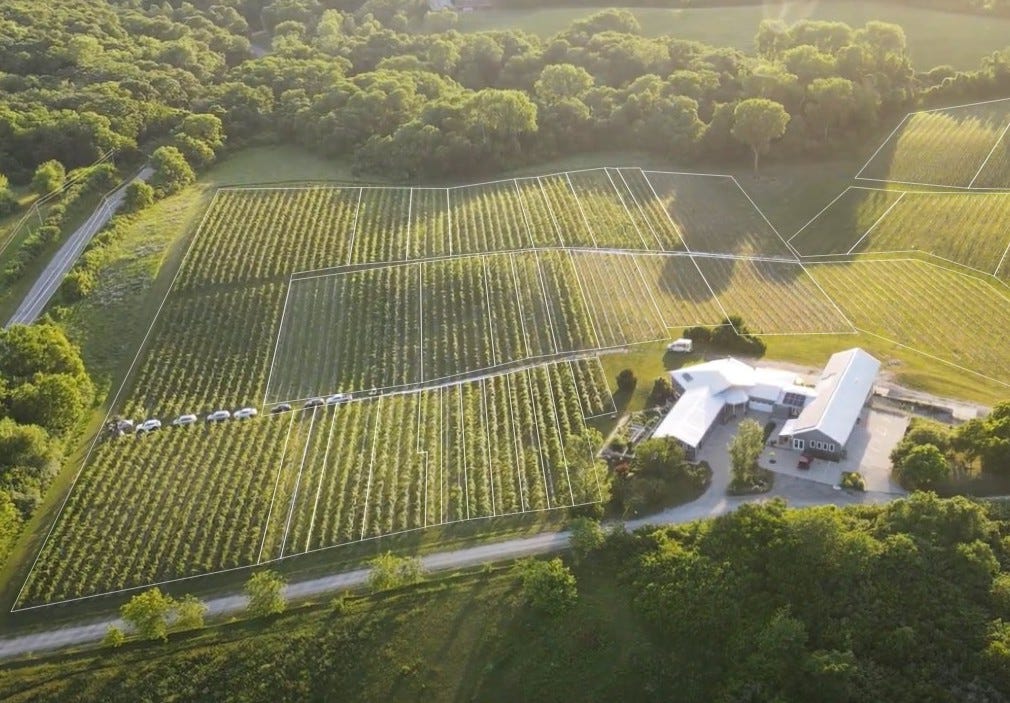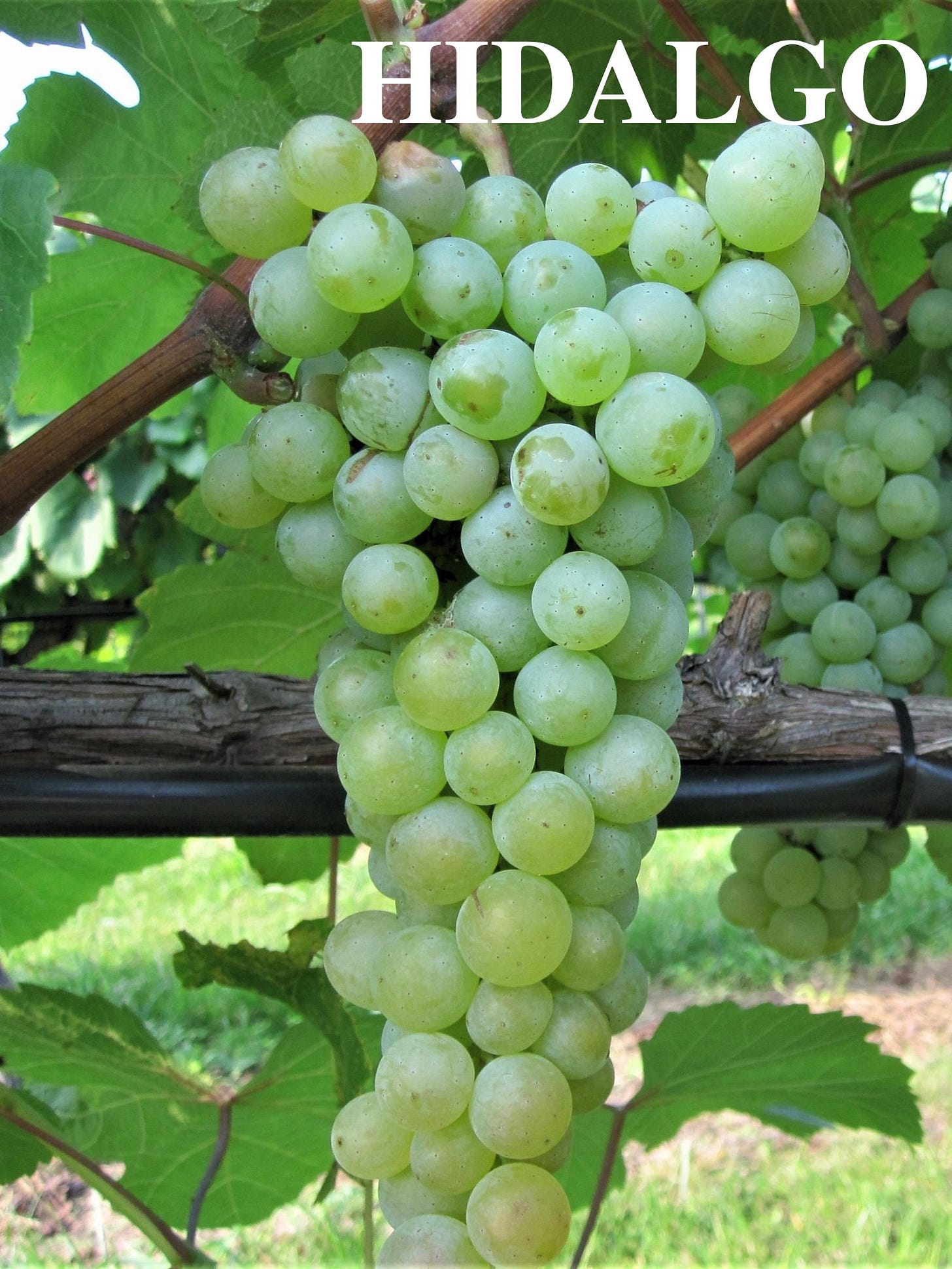Indigenous American Grapes: Proof of Concept
TerraVox and the meaning of planting unknown grapes and selling unknown wines
One hundred and thirty years ago, exactly, a 50-year-old horticulturist living in Texas hybridized a new grape from the Elvira, Herbemont, and Gold Coin varieties, three types of grapes you have probably never heard of. He called the new grape “Wetumka”. You’ve never heard of this grape either and you’ve never tasted wine made from Wetumka. If you had, you’d likely note its highly aromatic character redolent of pineapple and papaya, the crisp acidity, and its deep yellow color.
Wetumka produces a delicious wine. Moreover, it’s highly resistant to pests and diseases. It can be produced at low alcohol levels too and remain very delicious with just the slightest hint of sweetness. Does this sound like exactly what a younger, less experienced wine drinker who hasn’t dabbled much with wine would like? I think so too.
I know of one winery in America making a Wetumka. I represent this winery, providing public and media relations consulting. I don’t normally write about my clients for any number of good reasons. In this case, however, I want to talk about the remarkable exploits of a small Missouri winery that is pursuing a philosophy of grapegrowing and winemaking I’ve never encountered in more than 30 years in the industry.
TerraVox Winery is located just outside Kansas City, Missouri on about 15 acres. The winery was placed there by Jerry Eisterhold, a renowned museum designer who had scoured his home state for just the right terroir to attempt a resurrection. Having been fascinated by the work of Texas horticulturalists T.V. Munson (who both hybridized and/or discovered hundreds of native North American grapes as well as played a key role in saving the French from its phylloxera plague), Eisterhold was determined to uncover which indigenous American grapes were the best candidates for producing high-quality wine. Since founding TerraVox in 1996, Eisterhold has planted well over 65 different varieties and studied their suitability for winemaking. That’s a lot of carboys.
The following is a partial list of indigenous North American grape varieties from which TerraVox has produced wine. If you have heard of any of them, it’s only because 1) you are a student of American wine history, 2) you work in the wine industry and accidentally came across the grape in an obscure book on ampelography, 3) you are a wine geek of extraordinary proportions, or 4) you’ve done some marketing consulting for TerraVox:
ALBANIA
AMBERBONTE
AMERICA
BRILLIANT
CAPTIVATOR
CARMAN
CLOETA
DELICATESSEN
ELLEN SCOTT
HIDALGO
LAST ROSE
LOMANTO
MARGUERITE
MEUNCH
ROMMEL
STARK-STAR
WINE KING
These are just the grapes that TerraVox has, among others, used to produce and sell wines commercially. There are many, many others. And it leads us to ask, why is TerraVox the only winery making wine with these varieties?
First, it should be noted that these grapes are in no way inferior to or produce inferior wines from vinifera grapes. Moreover, they are grapes that are far more resistant to diseases and pests than many vinifera grapes. Additionally, these are grapes that are well adapted to a variety of different climates, including extreme climates.
Second, it should be said that the grapes grown by TerraVox and those gathered and hybridized by T.V. Munson are largely not produced from or of the Vitas Labrusca species of grapes that are known for their “foxy” and sweet character and are so closely associated with native American grapes. They are more commonly of the Vitas Riparia, Vitas Aestivalis, and Vitas Rupestris families. Put another way, these are not your father’s American wines.
This is all true, but it doesn’t explain why no one knows anything about these grapes. As it is with so many things, Prohibition helped kill these grapes. These and other North American varieties were planted across the country and particularly in the Midwest prior to the onset of Prohibition. From Missouri through Illinois, across Ohio, and into the eastern states, these and other non-Vinifera grapes formed the backbone of the American wine industry. With the onset of Prohibition, wine grapes were either pulled from the ground or budded over to grapes better suited for the table like Concord and Catawba.
During Prohibition, the wines that made their way down American throats were those grown in other countries and made from Vinifera grapes, such as Bordeaux, wines from Germany, and Italian wines. Now, consider the experience of the G.I’s who fought in the European theater during World War II. They encountered the wines of France, Italy, and Germany along with the cultured life that surrounded these wines, and brought this knowledge back home with them. The American wine industry was re-born with European Vinifera grapes, while knowledge of North American Indigenous grapes was largely forgotten.
Another challenge for TerraVox and the indigenous grapes is that when they are given consideration they are commonly discussed in the same breath as “Hybrids”. These grapes, commonly grown in much colder climates in the East and midwest, are produced by crossing Vinifera and North American grapes. It’s not that these are poor grapes or that they make poor wines. They aren’t and they don’t. However, when the authentic indigenous American varieties as grouped with or confused with the French-American hybrids, their unique character, and importance are disguised.
So, yes, there are challenges.
And that is what drew me to TerraVox. Lots of wineries and potential clients have challenges. But in this case, there’s a lot riding on Jerry Eisterhold’s reclamation project: proof of concept.
Successfully resurrecting and reclaiming these indigenous grapes for the American wine industry is an important project. This is particularly true when you consider that the American wine industry is looking for new ways of speaking to younger consumers, finding new conversations to engage all American wine consumers, confronting climate changes that will demand a close look at which grapes are planted where, and something entirely authentic appears to be exactly what consumers are seeking.
It is entirely possible that Wetumka, Albania, Cloeta, Meunch, Hidalgo and Lomanto are just what the industry and its patrons ordered. But a compelling demonstration of their utility is first needed before winemakers will commit to planting acres of these varieties.
In a way, the TerraVox wines produced from native North American grapes fall into the same category as Orange, Natural, and Pet-Nat wines that have been trending for the past few years. I’m not sure what to properly call this category of wine other than “new”. This affiliation works for TerraVox. But it only gets the wines adjacent to trendsetting minds. After that, they need to perform. And they do. But for that somewhat small handful of folks who know, understand, and champion these grapes and wines, the challenge of opening vinifera-indoctrinated minds is substantial.
Nevertheless, for me, it’s a matter of being involved in a voyage of discovery. This is an exciting prospect for someone who has made a career out of telling stories.









What a fun article! I have to say I have never heard of a single one of these grapes and I've been studying, selling and consuming for fourty years.
NatGeo just had a cool article on the resurrection of the Mission Grape in Mexico as a way to deal with climate induced changes.
https://www.nationalgeographic.co.uk/science-and-technology/2023/01/these-ancient-grapes-may-be-the-future-of-wine -
Great article, Tom. Just one observation: Any short list of Munson varieties at TerraVox should include the red superstar Lenoir.